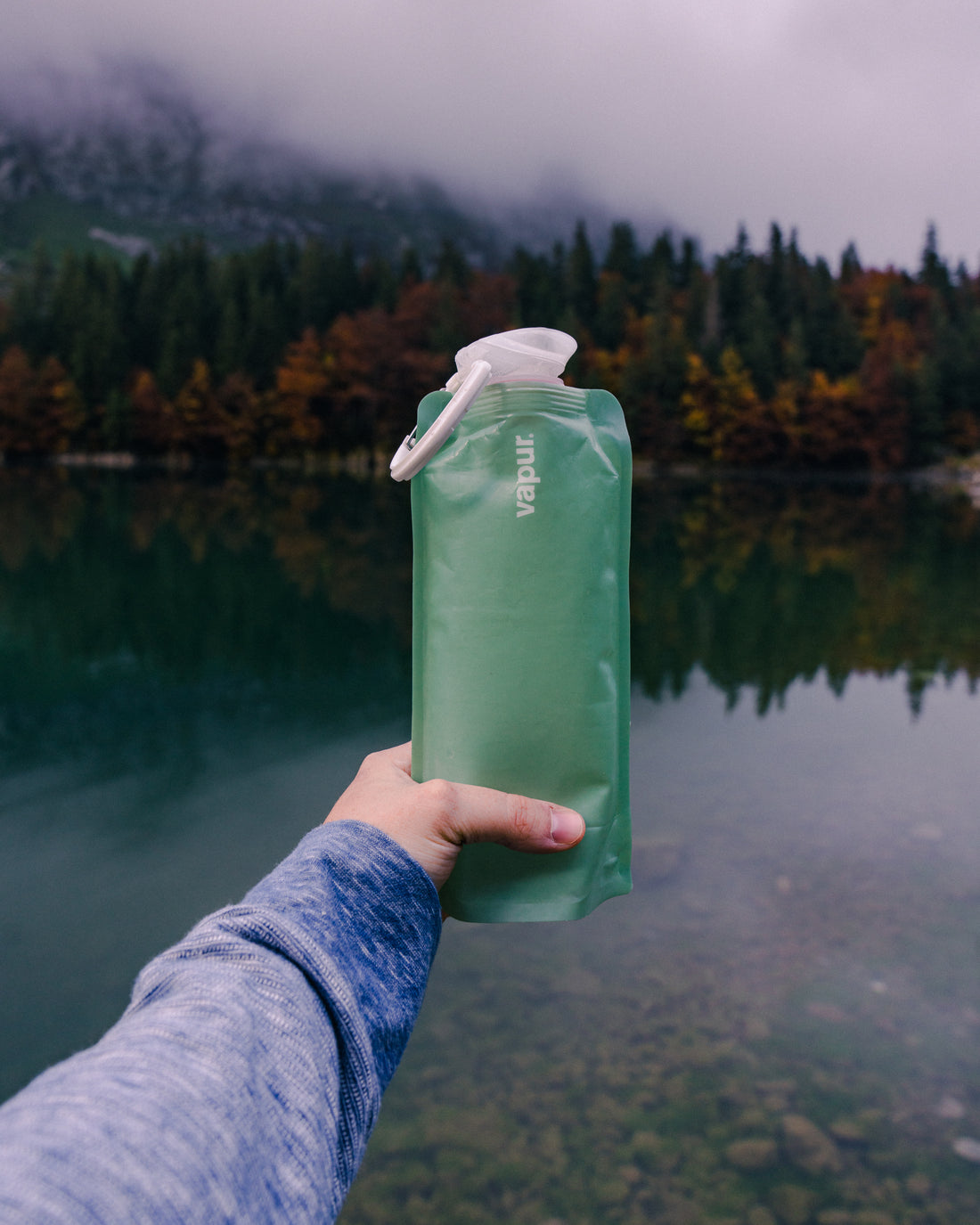Spending time outdoors is a great way to stay fit and healthy, especially as you age. However, no matter what your fitness level or how old you are, you are always at risk of becoming dehydrated if you don’t drink enough water. Dehydration is particularly an issue if you are hiking or doing any kind of physical activity when the weather is warm.
To keep you happy and healthy, we have the insights and tips to stay hydrated during your next outdoor adventure.
Why Hydration is Critical When You’re Spending Time in the Great Outdoors
Why is water so important when you work up a sweat outside? For starters, when engaging in physical activity outdoors, it’s much easier to run into potential issues like overheating, muscle aches, low blood sugar, and dehydration if you aren’t maintaining your electrolyte levels. Additionally, staying hydrated supports healthy aging and reduces your risk of developing chronic health conditions.
Spending time outdoors and drinking plenty of water supports skin health. Not only can the sun damage your skin when you’re outside, but dehydration can also dry out your skin, reduce blood flow, cause your skin to sag, and reduce skin density. In contrast, when you do drink enough water, it improves skin thickness, helps blood flow to your skin and other organs, improves elasticity, and boosts overall health.
Key Hydration Strategies for Outdoor Enthusiasts
Whether you are hiking the trail or engaging in any other outdoor adventure, here are some essential tips to help you stay sufficiently hydrated:
1. Pre-Hydrate
Before leaving your house, you should be pre-hydrating to set yourself up for success, especially if you plan on engaging in a high-exertion activity or will be spending a lot of time in the sun and warm weather. Ideally, you should drink 16 to 24 ounces of water about an hour or two before you start working up a sweat.
2. Set a Daily Goal and Reminder
When hiking, biking, running, or partaking in any other outdoor activity of choice, you should drink small amounts frequently as opposed to going for long periods without and then chugging a ton of water all at once. A great hack to help you drink more water is to set a daily goal based on your activity level and also set reminders on your phone or watch to ensure you are drinking regularly.
3. Invest in Quality Hydration Gear
Another tip for staying hydrated throughout the day is to always keep a water bottle with you and consider investing in hydration gear that you like. It may sound silly, but having a water bottle or bladder backpack combo in a color and style that makes you happy can encourage you to drink more. It also helps to invest in quality gear that keeps your water crisp and cold on hot days or keeps it from freezing when temps are low.
4. Compensate For Electrolyte Loss With Snacks
When you sweat, you lose electrolytes, depleting your energy and hydration levels. That’s why it’s crucial to supplement drinking water with snacks that can help replenish your electrolytes. You should bring healthy snacks high in sodium, potassium, calcium, and magnesium, such as trail mix, fruits, and protein bars. Electrolyte water mixes can also help.
5. Plan Your Route Around Water Sources
If you are going on a long hike, make sure to plan a route that takes you by a water source, such as a lake, stream, river, or water fountain. However, keep in mind that certain water sources should be contaminated, which means you should avoid them or have the right equipment to sanitize or filter the water before consumption.
Even in otherwise clean and healthy areas, the water could still be contaminated for any number of reasons. For example, climate change may impact public health by contaminating local water sources that have traditionally been safe to drink from in the past. Natural disasters, for instance, can increase the spread of diseases and bacteria through contaminated water, so no matter where you are, always make sure you know your water source and whether or not it's safe.
6. Wear Sun Protection
Sunburns notoriously speed up dehydration and can increase the risk of heatstroke. As such, keep yourself protected when spending time outdoors by wearing protective clothing and regularly applying sunscreen. You may also need to apply it more frequently if you are sweating or getting wet.
7. Do the Bulk of Your Activity While Temps Are Cooler
As an add-on to the previous point, to avoid excess sweating and sun exposure, plan your hike or other outdoor activity for times when the temperature is cooler. Head out early and return before 2 pm or go out after 4 pm.
8. Rehydrate After Activity
Once you are done with your activity, don’t forget to rehydrate. Even if you drank regularly throughout the day, you’ll want to continue hydrating to promote recovery. At least 16 ounces of water is best, and it's even better if you toss in an electrolyte mix or sports drink to replenish sodium levels.
Conclusion
Smart hiking isn’t just about staying hydrated — it’s also about staying safe. To ensure a successful trip, make sure you also check and prepare for weather conditions, know how to properly deal with wildlife interactions, bring first-aid supplies, and have a way to communicate in case you get hurt or lost. The more you prepare, the more likely you are to have a safe and enjoyable time.



